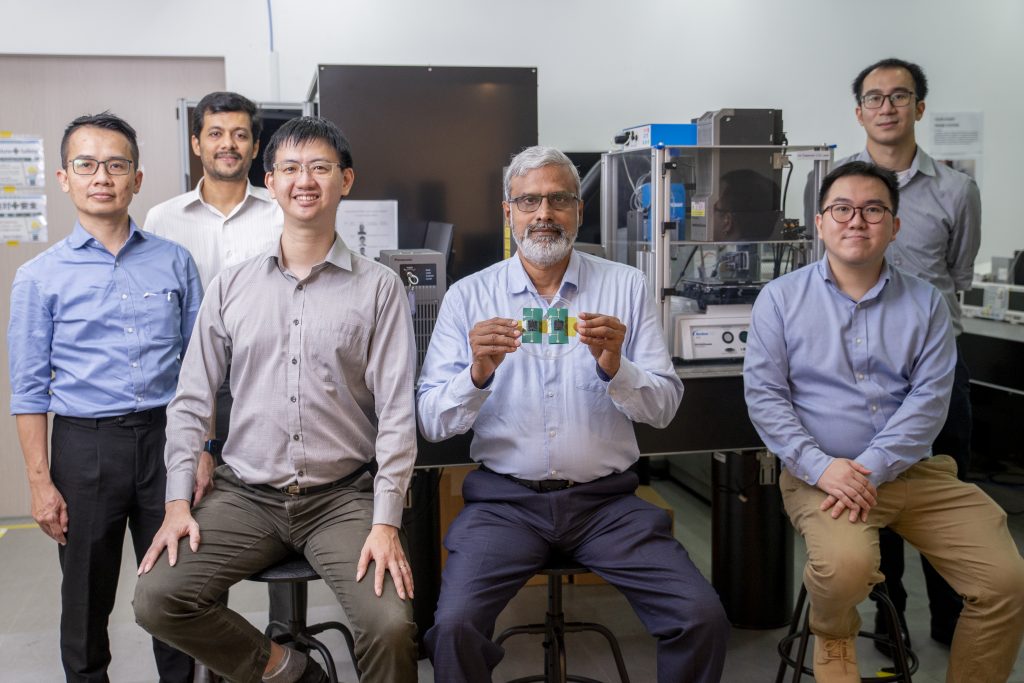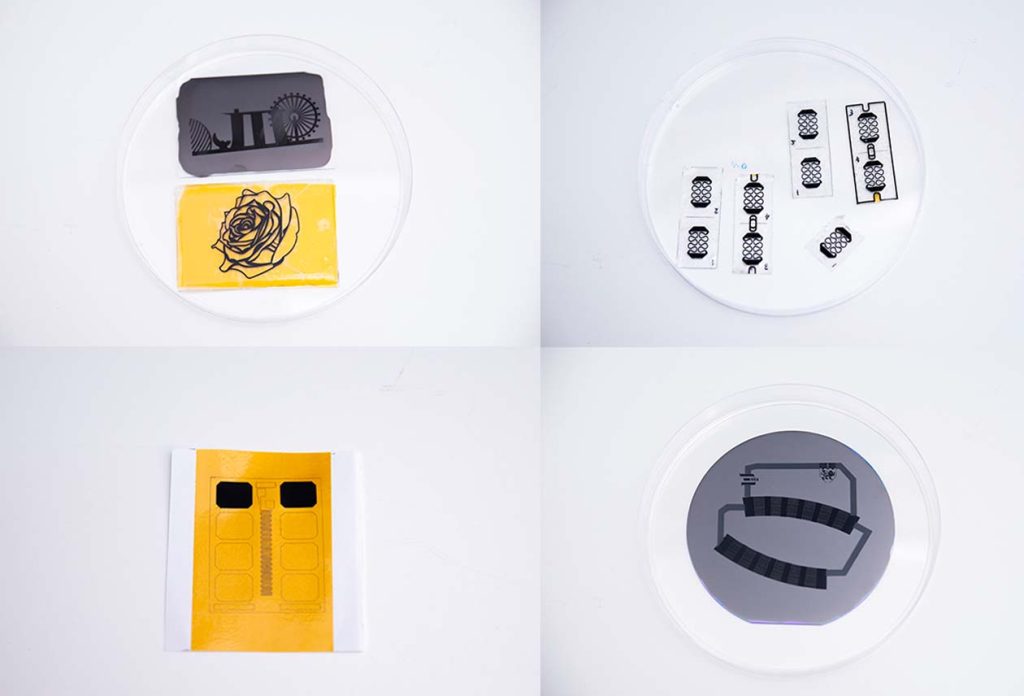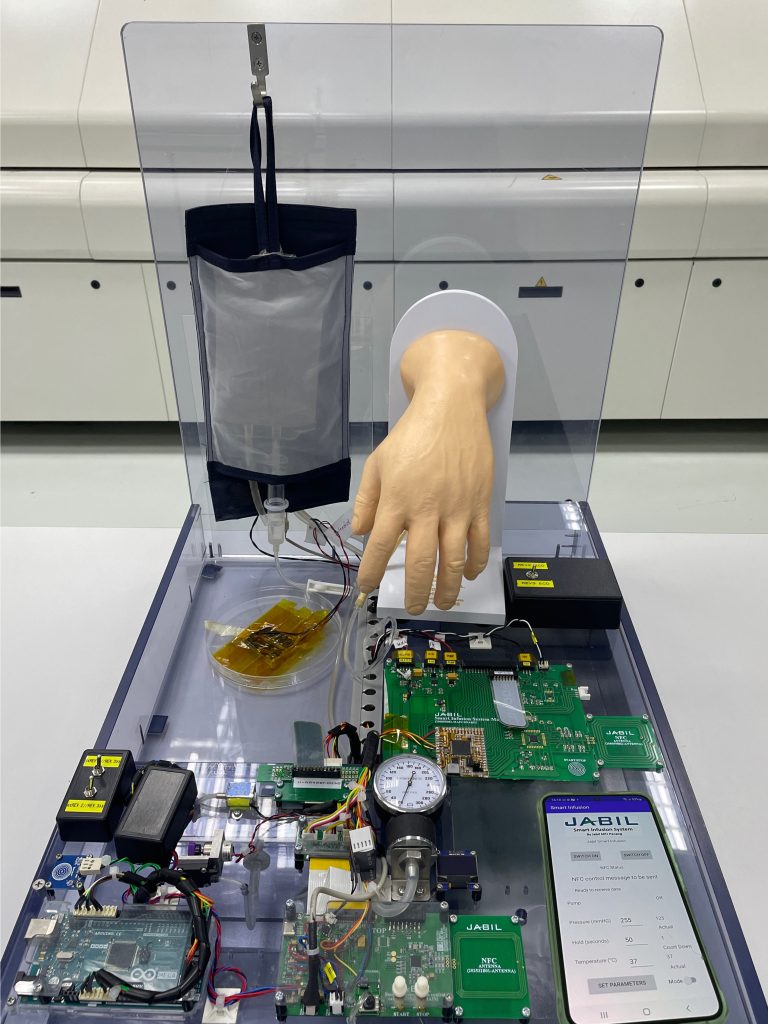Scientists from Nanyang Technological University Singapore (NTU Singapore), the Singapore Centre for 3D Printing (SC3DP), and Japanese electronics firm Panasonic have developed a new multi-material 3D printer.
Electronic components and devices are traditionally manufactured from rigid metals, silicone, and ceramics. However, there is growing demand for flexible and wearable electronics that can be bent, twisted, and conformed to various surfaces.
This new 3D printer aims to meet these market demands. Incorporating multi-wavelength high-power lasers, the 3D printer is designed for quick and easy 3D printing of smart, flexible, and wearable electronic devices.
“Our project aims to find a way to 3D print new materials like organic polymers and carbon-based materials like graphene, which has properties that allow them to be printed or coated onto flexible substrates like plastics or fabrics, creating flexible and stretchable circuits,” explains project co-lead Associate Professor Murukeshan Vadakke, from NTU School of Mechanical and Aerospace Engineering (MAE) and SC3DP.
“3D printed flexible electronics pave the way for more comfortable and mobile wearable devices as they can be lighter and smaller. We can now create unique structures that were previously impossible with traditional rigid electronics.”
This project between NTU and Panasonic dates back to 2016. Since then, the team has filed two patents, presented at 11 national conferences, and published 11 papers.
The NTU-Panasonic team claims that their new 3D printer could revolutionize additive manufacturing, opening new possibilities for product design innovation with unmatched functionality and flexibility.

Panasonic’s new multi-material 3D printer
The new multi-material 3D printer employs varying laser wavelengths. These trigger thermal and chemical reactions that can transform common carbon-based materials, like polyimide and graphene oxide, into a new type of highly porous graphene. Structures 3D printed with this novel graphene are light and conductive. They can also be 3D printed or coated onto flexible substrates like plastics, glass, gold and fabrics, creating flexible and wearable devices.
“Our technology allows the creation of highly porous and conductive graphene-based material for use in different applications,” claims Dr Low Mun Ji, Co-leader of the project and General Manager of Panasonic. “Compared to traditional graphene manufacturing methods, our method is faster, cheaper, and highly compatible with a wide range of materials.”
Looking to the future, Panasonic has set up a new facility for laser-based manufacturing systems at its Singapore based research hub. This new facility will enable further trials of concepts using components 3D printed by the multi-material 3D printer. This forms part of Panasonic’s “Autonomous Factory” concept, for the development of “smart factories for the future.”

Applications and use-cases
This new 3D printer has already attracted interest, including from the Penang division of American manufacturer JABIL. Jabil Penang is working to integrate 3D printed graphene-based electronics into a smart infusion system.
The company has already produced a proof of concept with a low-cost intravenous (IV) bag prototype, embedded with an artificial intelligence (AI) powered 3D printed sensor. This device monitors the status of the IV drip, automatically regulating parameters such as temperature and pressure flow. The relevant information is then transmitted to a smartphone in real-time. This enables medical personnel to remotely and efficiently monitor, detect, and control IV functions.
The research team has also received funding support from the National Additive Manufacturing Innovation Cluster (NAMIC). This funding has been used to test the integration of 3D printed components into high-performing electronics like pressure sensors and heaters.

Multi-material 3D printing
Last year, Finland-based bioprinting firm Brinter launched what they claim to be the world’s first multi-material, multi-fluidic bioprinting printhead. Designed for use with Brinter’s 3D bioprinters, this printhead aims to enable high-precision tissue engineering and regenerative medicine applications. The printhead’s hardware can be modified with different temperature control and imaging options. This makes it compatible with a wide variety of material types.
Elsewhere, in 2021, Desktop Metal acquired Belgian recoater system developer Aerosint, to expand their multi-material 3D printing capabilities. Through its patented Selective Powder Deposition technology, Aerosint can 3D print multiple materials simultaneously. It is said that this improves powder efficiency, maximizing cost and part throughput gains.
Subscribe to the 3D Printing Industry newsletter to ensure you keep up with the latest 3D printing news. You can also follow us on Twitter, like our Facebook page, and subscribe to the 3D Printing Industry Youtube channel to access more exclusive content.
Are you interested in working in the additive manufacturing industry? Visit 3D Printing Jobs to view a selection of available roles and kickstart your career.
Featured image shows the members of the Panasonic-NTU multi-material 3D printer team. Photo via NTU Singapore.


